Biology is the scientific study of living things. There are more than 10 million species of living things on Earth. They range in size from microscopic bacteria to huge blue whales and towering redwood trees. Living things also differ greatly in where and how they live. However, all forms of life share certain characteristics that set them apart from nonliving things. These characteristics include the ability to reproduce, to grow, and to respond to changes in the environment.
Traditionally, biology has been divided into two major fields. Botany deals with plants. Zoology deals with animals. Botany and zoology are further divided into various branches and specialized areas of study. But most branches of biology apply to both plants and animals. For example, anatomy (the study of the structure of living things) might deal with plants or animals. So might genetics (the study of heredity).
Biology may also be divided into ecology, physiology, and systematics. Ecology deals with the relationships among living things and between organisms and their environment. Physiology concerns life functions, such as digestion and respiration. Systematics is the scientific classification of organisms. Systematics is also called taxonomy.
Biologists often make use of the methods and findings of other sciences. For instance, they rely on physics and chemistry to help them understand the processes that occur in living plants and animals. They use statistics in studying changes in the size of an animal or plant population—that is, the number of organisms of a particular species in an area. Astrobiologists work with astronomers in searching for life elsewhere in the universe.
Biological research has greatly affected people’s lives. For example, farm production has soared as biologists have helped develop better varieties of plants and new agricultural techniques. Discoveries in biology have enabled physicians to prevent, treat, or cure many diseases. Research on the relationships between living things and their environment has helped in the management of wildlife and other natural resources.
What biologists study
Biology is such a broad subject that most biologists specialize in some area of study. But in whatever area they work, all biologists are interested in both the parts of living things and how the parts work together.
Certain biologists study organisms that live in a specific environment. Marine biologists, for example, investigate life in the ocean. Some biologists concentrate on a particular type of organism. Ornithologists, for instance, study birds. Many biologists examine the parts of living things. Cytologists, for example, deal with the structure, composition, and functions of cells. Other biologists analyze life processes. Embryologists, for example, investigate the formation and development of animals and plants before they become independent organisms.
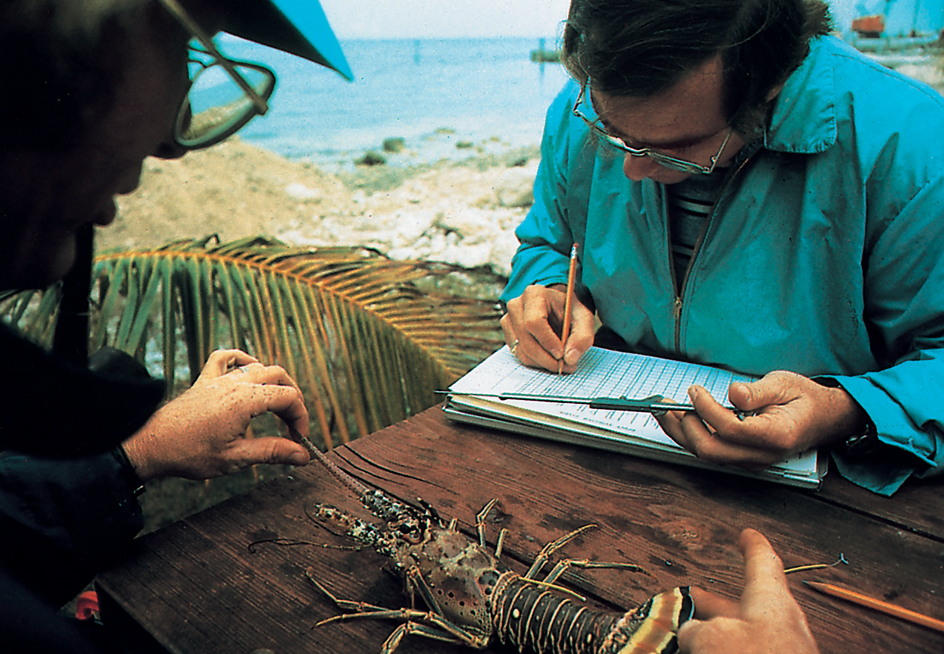
The techniques and tools that biologists use depend on what they are investigating. Many biologists conduct experiments to gain information and to develop and test theories. Their experiments may involve making a change in an organism’s way of life or its environment and then observing the effects of that change. For example, a biologist may change the diet of an animal and study how the animal’s growth and functioning are thereby affected. The microscope has long been one of the biologist’s most useful tools. An entire branch of biology, called microbiology, is devoted to the study of organisms that can be seen only with a microscope. Other techniques and tools used by biologists range from aerial surveys of plant and animal populations to techniques that isolate the molecules of living cells.
Loading the player...Cell division
History of biology
Beginnings.
In prehistoric times, people gradually developed a great deal of practical biological knowledge. They learned to grow many kinds of plants. They also learned to tame and raise certain animals. In ancient times, people of China, India, and the Middle East accumulated further knowledge of plants and animals. For instance, they knew how to use numerous plants as medicines or poisons. The Egyptians learned some anatomy and physiology through embalming their dead.
The ancient Greeks made major advances in biology. Unlike most other people of the time, some Greek thinkers did not believe that gods or spirits caused natural events. Instead, they saw nature as operating according to laws that people could discover. About 400 B.C., a Greek physician named Hippocrates taught that diseases have only natural causes. He also emphasized the relationships among the parts of an organism and between an organism and its environment. Hippocrates is often called the father of modern medicine.
During the 300’s B.C., the Greek philosopher Aristotle gathered a vast amount of information about plants and animals. He was one of the first thinkers to classify animals according to their own characteristics rather than according to their usefulness to people. Pliny the Elder, a Roman naturalist who lived during the first 100 years after Christ’s birth, also collected many facts about plants and animals. He included the information in his 37-volume Natural History.
During the A.D. 100’s, Galen, a Greek physician who practiced medicine in Rome, contributed greatly to advances in anatomy and physiology. He gained much of his knowledge from treating injured gladiators and dissecting apes and pigs.
The growth of biological knowledge slowed during the Middle Ages, a 1,000-year period in European history that began in the 400’s. However, works by Hippocrates, Aristotle, Galen, and other ancient authorities were collected, preserved, and translated by Arab scholars in the Middle East. The Arabs also made major contributions of their own in biology. The works of the ancient Greek and Arab scientists eventually made their way to Europe. During the Middle Ages, the authority of the ancient writers was unquestioned, though their works contained many errors.
The Renaissance.
From the early 1300’s to about 1600, a new spirit of inquiry spread across western Europe. During this period, called the Renaissance, many anatomists and physiologists began to challenge the authority of the ancient writers. They believed that people should rely on experimentation and observation rather than accept without question the ideas of the ancients.
The emphasis on observation stimulated the development of accuracy in biological illustration. During the late 1400’s and early 1500’s, the great artist Leonardo da Vinci made hundreds of drawings of the human body. He paid careful attention to detail and proportion. Leonardo based his work on dissections of human corpses. The first scientific textbook on human anatomy was published in 1543. This work, titled On the Structure of the Human Body, was written by Andreas Vesalius, an anatomist born in what is now Belgium. Like Leonardo, Vesalius based his work on dissections he had made of human corpses. He illustrated the book with lifelike drawings of human anatomy. Vesalius corrected many of Galen’s mistaken ideas.
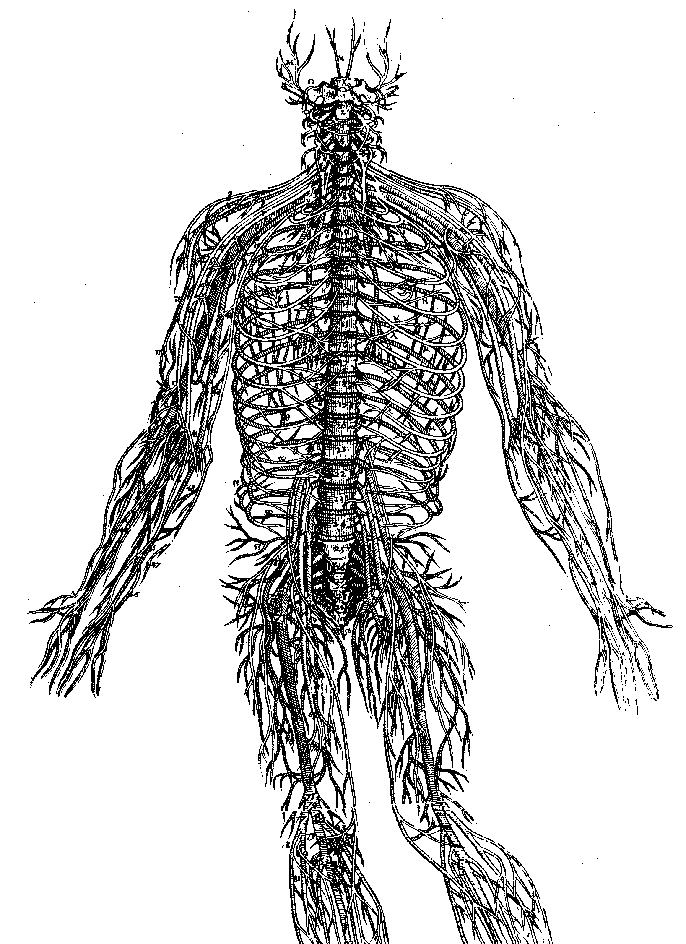
One of the most important discoveries in physiology in the 1600’s was made by William Harvey, an English physician. In 1628, Harvey published the results of his experiments showing how blood, pumped by the heart, circulates through the body.
Early discoveries with the microscope.
The introduction of the microscope led to great discoveries in biology during the middle and late 1600’s. In 1661, an Italian anatomist named Marcello Malpighi, with the aid of a microscope, became the first person to observe the movement of blood through the capillaries. In 1665, Robert Hooke, an English scientist, wrote Micrographia. The book contained detailed drawings of many biological specimens as seen with a microscope. It included the first drawings of cells. In the mid-1670’s, Anton van Leeuwenhoek, a Dutch amateur scientist, discovered microscopic life forms. He thus opened up a new world for investigation.
The origins of scientific classification.
During the 1700’s, Europeans came into increasing contact with distant parts of the world. They thereby learned of many unfamiliar plants and animals. Naturalists realized that they needed a classification system that could include those plants and animals. In 1735, the Swedish naturalist Carolus Linnaeus (also called Karl von Linne) published a system of classification. In it, he grouped organisms according to structural similarities. His system forms the basis of scientific classification used today. 
Classifying organisms according to structural similarities stimulated interest in comparative anatomy. Comparative anatomy is the comparison of the anatomical structures of different organisms. The leading comparative anatomist of the late 1700’s and early 1800’s was Baron Cuvier of France. Cuvier noticed that most kinds of animals have one or another of a few basic body types. He devised a system of classifying animals according to basic body types that is still used in modified form. Cuvier also applied the methods of comparative anatomy to another field he helped establish, paleontology—the study of prehistoric life.
The theory of evolution.
Most biologists had long believed that each species of life had remained unchanged and no new species had appeared since the world began. However, biologists began to question those beliefs during the late 1700’s. They noted that farmers had produced new varieties of plants and animals by selective breeding. In addition, voyages of exploration had revealed isolated groups of plants and animals that contained many species which varied only slightly from one another. Biologists wondered why there should be so many species with little variation. Such observations led many biologists to believe that species change over time and that some species had evolved (gradually developed) from others.
During the early 1800’s, several biologists proposed explanations of how species evolve. The most convincing theory was eventually reached independently by two British naturalists—Charles Darwin and Alfred Russel Wallace. However, Darwin presented his ideas in a widely read book, and his work became better known.
Darwin detailed his theory of evolution in The Origin of Species (1859). According to Darwin, some organisms are born with traits that help them survive and reproduce. They pass the favorable traits on to their offspring. Other members of the same species that have unfavorable traits are less likely to survive and reproduce. The unfavorable traits eventually die out. Darwin proposed that species evolve as more and more favorable traits appear and are passed from generation to generation. He called the process natural selection.
Materialistic physiology and the cell theory.
Many physiologists of the late 1700’s had come to think of life as the total of the physical and chemical processes occurring in an organism. Unlike some other biologists, they did not believe that living things are guided in their functioning by spiritual or supernatural forces. Instead, they felt that living things are nothing more than special combinations of materials and function like machines. Such views are called materialistic physiology or mechanistic materialist physiology.
Antoine Lavoisier, a French chemist, applied the techniques of chemistry to physiology in the late 1700’s. He compared respiration to the burning of a candle. Both processes use oxygen and produce heat and carbon dioxide. Beginning in the mid-1800’s, the French physiologist Claude Bernard introduced a new approach to materialistic physiology. He saw living things as highly organized sets of control mechanisms. The control mechanisms work to maintain the internal conditions necessary for life. He pointed out that in a mammal, for example, such mechanisms keep body temperature constant in spite of variations in the temperature outside the organism.
Paralleling developments in physiology was a growing understanding of the cell. In the late 1830’s, two Germans—the botanist Matthias Schleiden and the physiologist Theodor Schwann—proposed that the cell was the basic structural and functional unit of all plants and animals. In 1858, Rudolf Virchow, another German scientist, presented his theory that all diseases were diseases of the cell. In combination, these ideas are called the cell theory.

Building on materialistic physiology and the cell theory, Louis Pasteur, a French chemist, and Robert Koch, a German physician, firmly established a new theory of disease. Through their studies, Pasteur and Koch proved what was called the germ theory during the middle and late 1800’s. According to the theory, many diseases are caused by microscopic organisms.
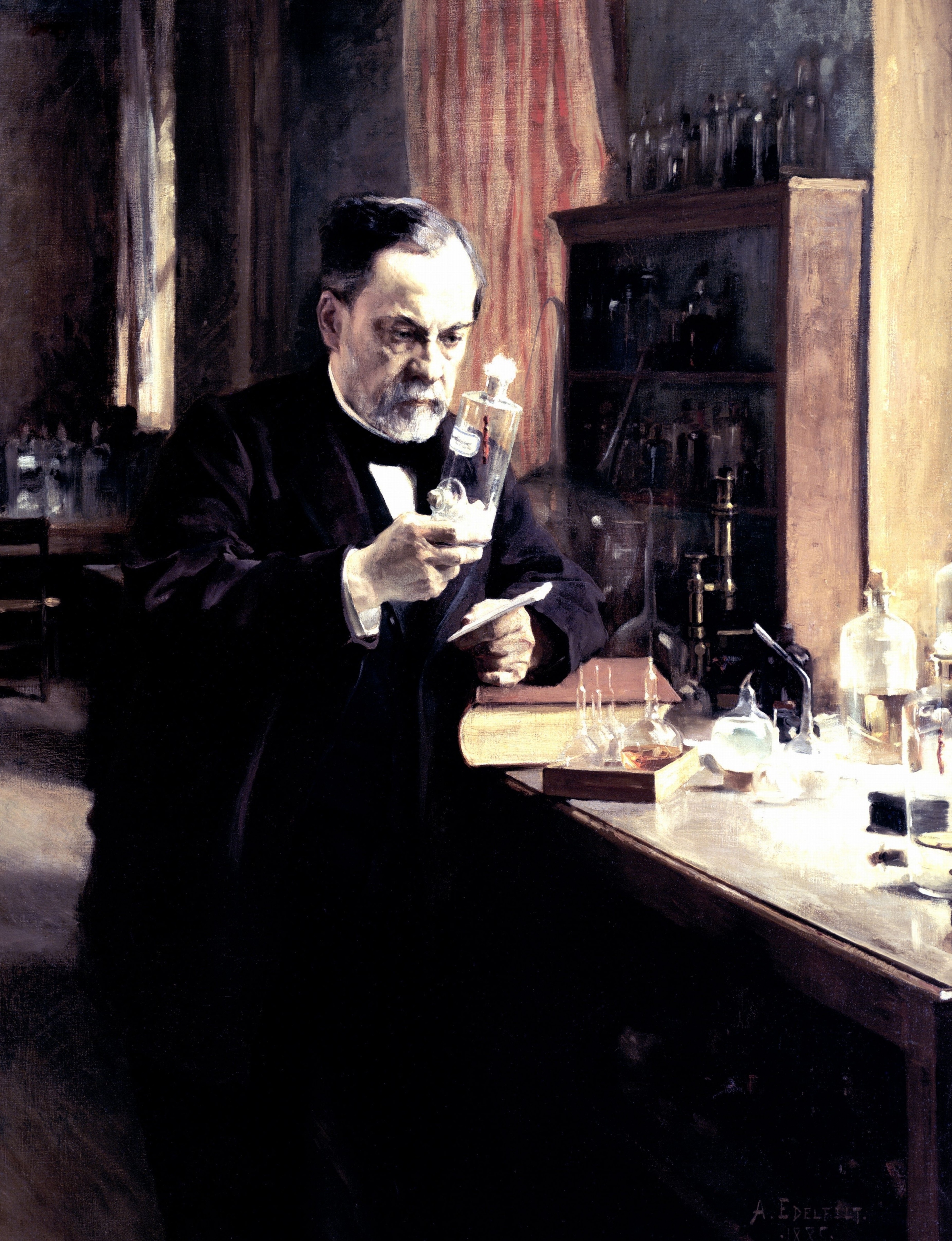
The growth of modern biology.
During the late 1800’s, Darwin’s theory of evolution had stimulated much speculation among biologists about the origin, nature, and development of organisms. By the early 1900’s, however, many biologists strongly rejected the emphasis on theory and speculation. Instead, they stressed the value of carefully controlled experiments. They also urged the application of mathematical techniques to biology. That method of investigation helped lead to an enormous expansion of biological knowledge, particularly in the understanding of the chemical and molecular basis of life.
Genetics was established as a branch of biology in the early 1900’s. It developed chiefly from experiments conducted during the mid-1800’s by Gregor Mendel, an Austrian monk. On the basis of his experiments, Mendel discovered that physical characteristics are produced by basic hereditary units. These hereditary units transmit traits from generation to generation. About 1910, Thomas Hunt Morgan, an American biologist, found that Mendel’s hereditary units—later called genes—are located on structures called chromosomes within cells. Biologists at the time also noted that changes in hereditary traits correspond to visible changes in chromosome structure. 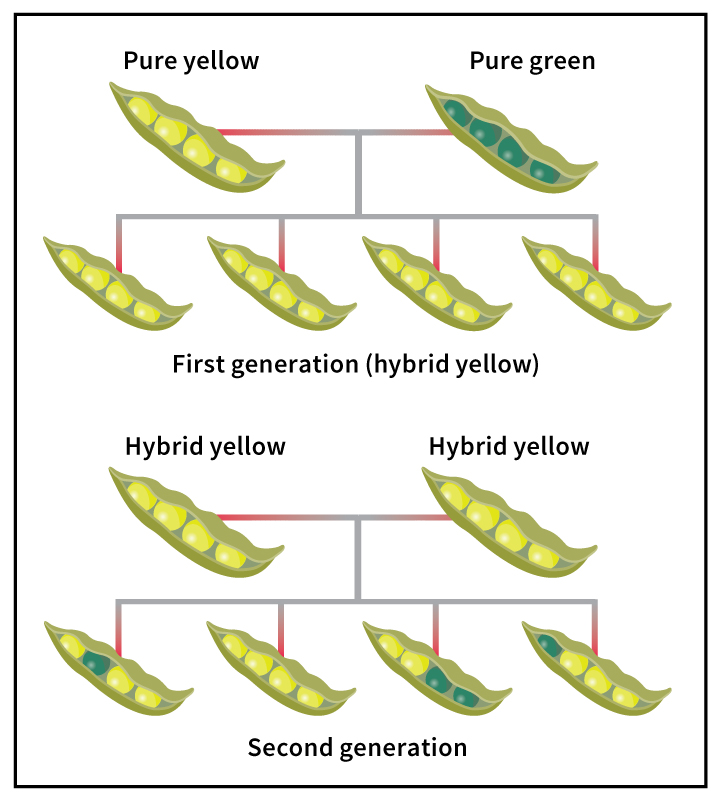

During the 1940’s, geneticists found that genes guide the manufacture of the proteins by which cells regulate their chemical processes. In 1953, biologists James D. Watson of the United States and Francis H. C. Crick of the United Kingdom proposed a model of the molecular structure of deoxyribonucleic acid (DNA). DNA is the material in chromosomes that controls heredity. Knowing DNA structure enabled biologists to understand the molecular basis of such life processes as heredity and genetic change.
Breakthroughs in genetics helped alter biologists’ approach to the study of evolution. By the 1960’s, many biologists were studying evolution in terms of changes in the kinds and numbers of genes in a population.
The field of ecology began to develop dramatically in the early 1900’s. Scientists had long recognized the importance of the relationships among organisms and between organisms and their environment. But the development of ecology as a separate branch of biology occurred after the introduction of such techniques as statistical analysis of complex systems of relationships. Since the 1960’s, concern about environmental effects of pollution has greatly stimulated research in ecology.
During the 1900’s, neurobiologists—people who study the nervous system—have learned much about how nerve cells and nerve networks function. Their work has led to a better understanding of the brain and central nervous system.
Current research and issues.
The study of the human immune system is one area at the frontier of biological research. The immune system is the body’s defense system against disease and foreign substances. Scientists are learning how our bodies produce a seemingly endless variety of disease-fighting proteins called antibodies. Each antibody is tailored to combat one of many foreign substances called antigens. Biologists have discovered that the body can produce a great number of different antibodies because certain genes rearrange themselves to produce antibodies that attack specific antigens. The study of the immune system has helped combat AIDS, a disease that immobilizes the immune system.
Loading the player...How your immune system fights influenza
Since the 1950’s, biologists have been collecting evidence for the theory that life began in a series of chemical reactions early in Earth’s history. They have produced biological molecules in chemical experiments that reproduce conditions thought to have existed on Earth billions of years ago. See Life (The origin of life).
Since the 1970’s, a growing number of biologists have questioned the idea that evolutionary change occurs only gradually over long periods. Instead, they accept the idea that evolutionary change sometimes occurs relatively quickly, over thousands of years rather than millions. This idea is called punctuated equilibrium. Although they debate certain details, nearly all biologists believe in the general outlines of evolution. People who are not biologists sometimes reject evolution because of gaps in our understanding of how particular species evolved. Still others reject the idea of evolution because it conflicts with their religious beliefs. See Evolution.
By the mid-1970’s, scientists had learned how to remove genes from one species and insert them into another. The process is called genetic engineering. Genetic engineering offers many potential benefits in medicine, industry, and agriculture. For example, scientists have transferred to bacteria the human gene that produces insulin—a hormone that regulates the body’s use of sugar. The bacteria then produce insulin. The insulin can be used to treat people with diabetes. But some question the morality of interfering with the hereditary makeup of living things through genetic engineering. Genetic engineering has also caused concern that the release of genetically engineered organisms into the environment may have harmful effects. For this reason, scientists involved in genetic engineering guard against accidental release of such organisms. See Genetic engineering.
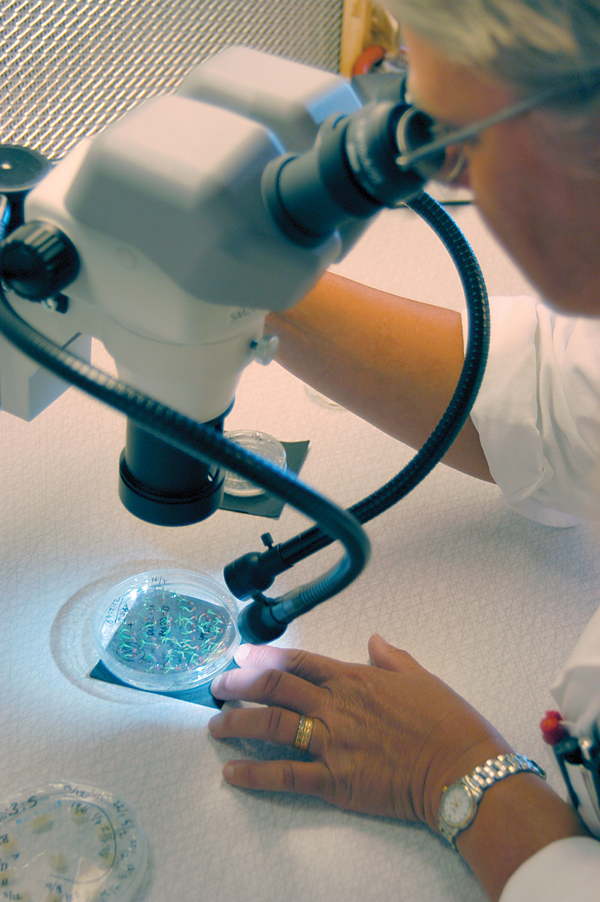
In 1996, Scottish scientists led by biologist Ian Wilmut successfully cloned a mammal by taking an egg cell from an adult female sheep and replacing the cell’s nucleus with one from another adult sheep. The sheep clone they produced was named Dolly. This marked the first time a mammal had been cloned in this way. It sparked a debate about the potential cloning of human beings.
In 1990, geneticists from around the world launched the Human Genome Project. This project has helped obtain the sequence, or order, of DNA in the genome of human beings and other organisms. A genome consists of all the genes on the chromosomes of a cell. In the early 2000’s, the Human Genome Project and Celera Genomics Corporation, a private company, completed the sequencing of essentially the entire human genome. Scientists used these findings to determine that a human genome has about 20,000 to 30,000 genes, far fewer than previously believed. Researchers also found that human beings share many genes with such primitive organisms as bacteria.
Careers in biology
To prepare for a career in biology, students should take such high school and college courses as chemistry, mathematics, and physics as well as biology. A bachelor’s degree is sufficient for some biology careers. Many positions, however, require a graduate degree. Some people with a bachelor’s degree teach in junior high and high schools. Others work as technicians in research laboratories. Many biologists with advanced degrees teach and conduct research at universities.

Job opportunities for biologists in agricultural research and in industry are increasing. The areas of genetic engineering and ecology are growing especially fast. Such biologists may work to develop new varieties of food crops or to create organisms capable of producing drugs.
Many government agencies responsible for public health, sanitation, and water quality employ biologists. Careers in biology also include work in zoos and botanical gardens. Some specialists in ecology and wildlife management work in state and national parks. In addition, some companies and government agencies hire biologists to study the environmental effects of pollution and of proposed construction projects.
